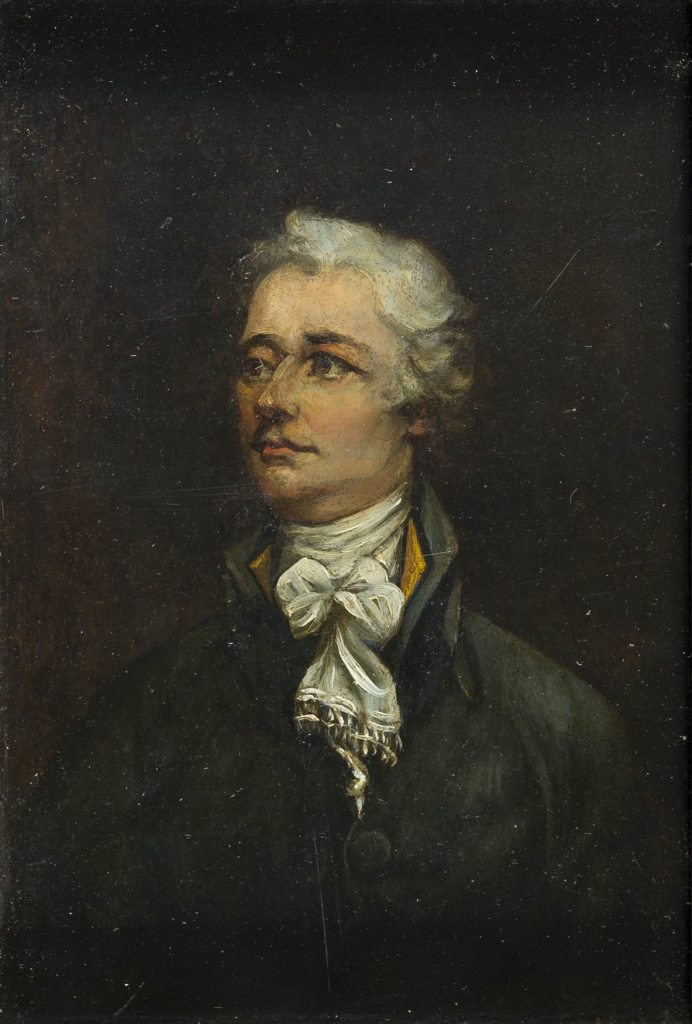by Heather Rockwood, Communications Manager

I was recently thinking about Hamilton, the Broadway-hit musical written by Lin-Manuel Miranda and first performed in 2015, and wondered what MHS collection and archive pieces we have that connect to Alexander Hamilton (1757–1804), one of our Founding Fathers. To my delight, I found two letters from him to his sister-in-law, Angelica Schuyler Church (1756–1814). A paragraph in one of the letters that Hamilton wrote compares to words in the musical, specifically in Church’s song, “Take a Break:”
In a letter I received from you two weeks ago
I noticed a comma in the middle of a phrase
It changed the meaning, did you intend this?
One stroke and you’ve consumed my waking days
It says
“My dearest, Angelica”
With a comma after dearest
You’ve written
“My dearest, Angelica”
Fans of the musical will know that in this song Church is teasing her brother-in-law about his grammar, and that the score alludes to a rumored flirtatious relationship between the two. These lines from the musical have been dubbed “comma sexting” on the internet. In the letter from 6 December 1787 in the MHS collection, Hamilton wrote to Church:
You ladies despise the pedantry of punctuation. There was a most critical comma in your last letter. It is my interest that it should have been designed; but I presume it was accidental. Unriddle this if you can. The proof that you do it rightly may be given by the omission or repetition of the same mistake in your next.

This paragraph reads as lighthearted sibling banter, and in a letter from Church to Hamilton on 19 February 1796, she called him her “naughty brother.” Some jocular banter between siblings to show off their knowledge, class, style, understanding, and affection is plausible, considering both Church and Hamilton were known for their witty writing. In the 1780s and 1790s, punctuation, spelling, and grammar were not governed by the rules we follow today, and although spelling was becoming standardized at the time of these letters, a comma in the wrong place was common.
Miranda admitted to taking some artistic license when writing Hamilton. For example, Church was already married by the time her sister, Eliza Schuyler, met Hamilton and later married him. Thus, the musical’s story of Church and Hamilton falling in love at first sight but knowing they couldn’t marry, and Church letting her younger sister marry Hamilton—as the lyrics in “Satisfied” reveal—is not historically accurate.
Read more about Alexander Hamilton in the MHS collection and archives on this Alexander Hamilton Features page.


